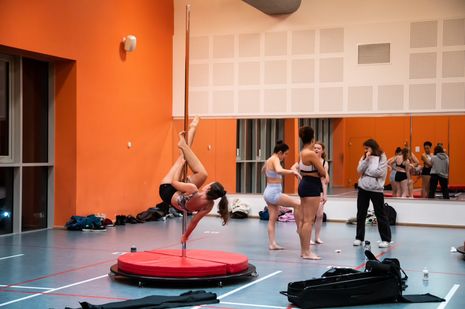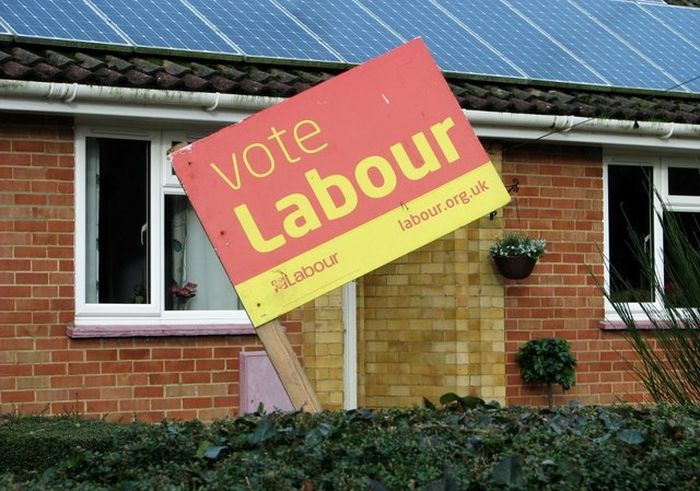Pole dancing doesn’t have to be sexual
Hanna puts the ‘pole’ in polemic, repudiating the inherent sexualisation of pole dancing

When I first considered taking up pole dancing, I didn’t automatically think about wearing thigh garters and six-inch platform heels, or doing erotic floorwork (a mesmerising pole branch nonetheless). I instead worried about my appearance and strength, how soon it would be until I embarrassed myself and how talented those at the top of the field were.
So it was disappointing to learn that my ex-partner’s immediate thoughts at the mere mention of me pole dancing made it clear that I couldn’t talk about or show my progress with pole without opening myself to sexual comments. Any excitement at sharing my progress was met with what they thought was an open invitation to hint at sexual favours. It was frustrating that a part of my life which I thoroughly grew to enjoy was taken out of the context in which I had initially introduced it. Now, this isn’t to say I don’t appreciate compliments on my ass – I’d like to think it doesn’t look half bad when practising, if I do say so myself – but in fantasising about bodies and inherently sexualising the sport and its participants lies my main gripe.
“Despite its history, some will continue to argue that pole dancing is a patriarchal farce of feminism”
Seemingly most of the attacks against pole come from the preconceived notion that pole’s purpose has always automatically been to serve the male gaze. It is certainly not, but it’s easy to see why people think so. My aunt once told me that she saw pole dancing as slutty and similar to stripping, akin to prostitution at most. This is despite the fact that its origins can be traced back to the Indian sport of Mallakhamb, and to Chinese pole, most moves of which are used in modern pole dance today and are certainly not ‘slutty’. The introduction of pole into the mainstream through the context of US strip clubs is what leads people to view it as consisting solely of paid erotic performances – but contemporary pole dance no longer reflects this. Moreover, are male pole dancers doing it for men or women? A double standard whereby pole stereotypically serves as a fitness stunt for men but a tool of seduction for women is cloaked in misogyny.
Despite its history, some will continue to argue that pole dancing is a patriarchal farce of feminism. At risk of sounding like a typical law student, to say as much requires circular reasoning. You’d have to first begin with a patriarchal assumption that, in all cases, a female poler’s actions are inherently sexual at most, and suggestive at least, no matter the way in which she is performing, how she is clothed and the environment in which she presents it. It is then this presumption of sexuality that is used to propel the argument that pole is for the male gaze. The flaw lies in jumping to an assumption of inherent sexuality rather than appreciating the skillful and artistic nature of the sport. No doubt male and non-binary polers are hesitant to embrace pole due to the enforced connotations of femininity and sex.
Those who partially agree, conceding that it’s only patriarchal when women are wearing less clothing, are also inane. Performing in leggings and a t-shirt compared to shorts and a crop top doesn’t hide my butt or boobs, and in my experience a thinner woman clothed in the same mini ruched two-piece as me is less likely to be subject to the same sexualisation. Does this then mean that a woman’s clothing is not to blame but the shape of her body? And if not the shape of her body then her movements? When will we be finally able to de-sexualise the female human body to the point where its presentation is no longer sexually shocking, but awe-inducing?
But in spite of all this academic talk, what is the practical alternative? It would be a signed, sealed and delivered win to the patriarchy if we were to suppress pole, accepting its denunciation because of the image that is projected onto it. To continue the stigma is a choice to actively blame women, rather than culture at large for the constraints on its character; no doubt much of its stigma derives from society’s opinion on sex work. Pole can be, and is, sexy if the performer wishes to make it so. But it is not inherently sexual. Those who attended CU Pole Society’s “A Night at The Movies” showcase in Lent can attest to the variety of styles that pole can take: from emotive and theatrical, to high energy and explosive, or to sensual and playful.
Pole has been successfully re-appropriated outside of a sexual context where it is instead a sport and form of expression. The bruises on my legs and friction burns between my thighs exist to remind me of the greatness that my body is capable of, but certainly not of the purpose of serving a sexual fantasy. When I leave my classes, I feel accomplished and content knowing that I’m part of an intersectional community based on both vulnerability and strength that seeks to uplift all its members.
So I will continue to keep up my yassified callisthenics and invest in cute two pieces. If my traditional Asian and religious parents can accept me for being a poler, the outside world can decline their invitation to try and paint my pole with a patriarchal brush.
 News / Local business in trademark battle with Uni over use of ‘Cambridge’17 January 2026
News / Local business in trademark battle with Uni over use of ‘Cambridge’17 January 2026 News / Cambridge bus strikes continue into new year16 January 2026
News / Cambridge bus strikes continue into new year16 January 2026 News / Uni members slam ‘totalitarian’ recommendation to stop vet course 15 January 2026
News / Uni members slam ‘totalitarian’ recommendation to stop vet course 15 January 2026 Interviews / The Cambridge Cupid: what’s the secret to a great date?14 January 2026
Interviews / The Cambridge Cupid: what’s the secret to a great date?14 January 2026 Science / Why smart students keep failing to quit smoking15 January 2026
Science / Why smart students keep failing to quit smoking15 January 2026










